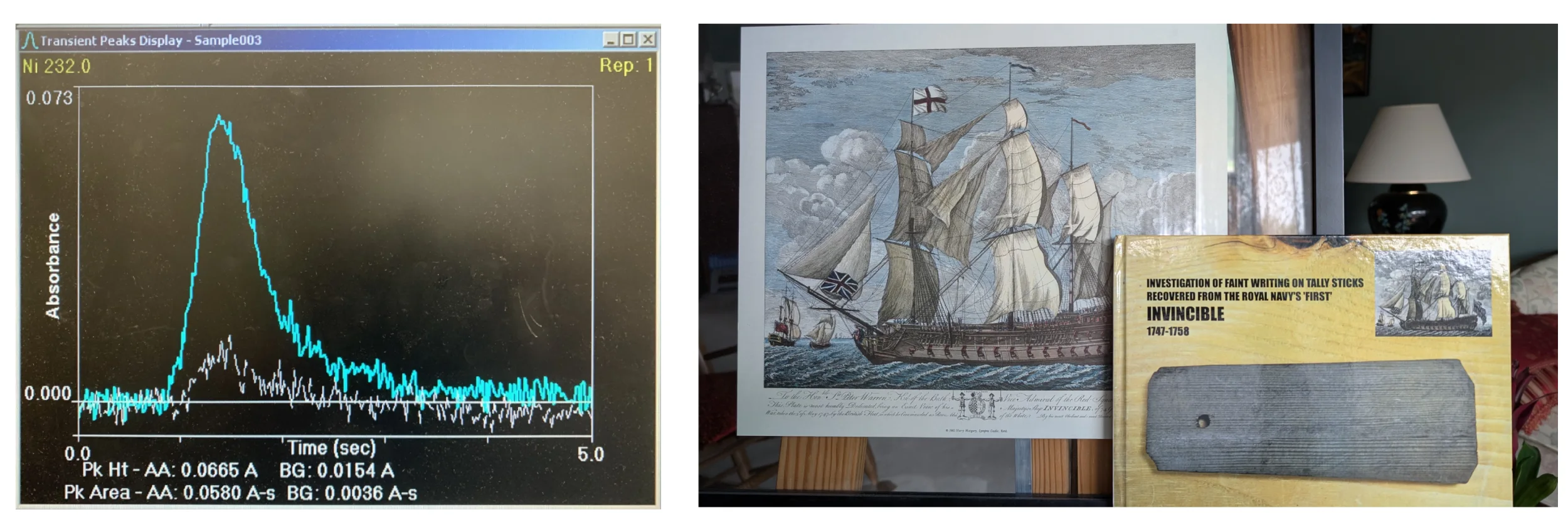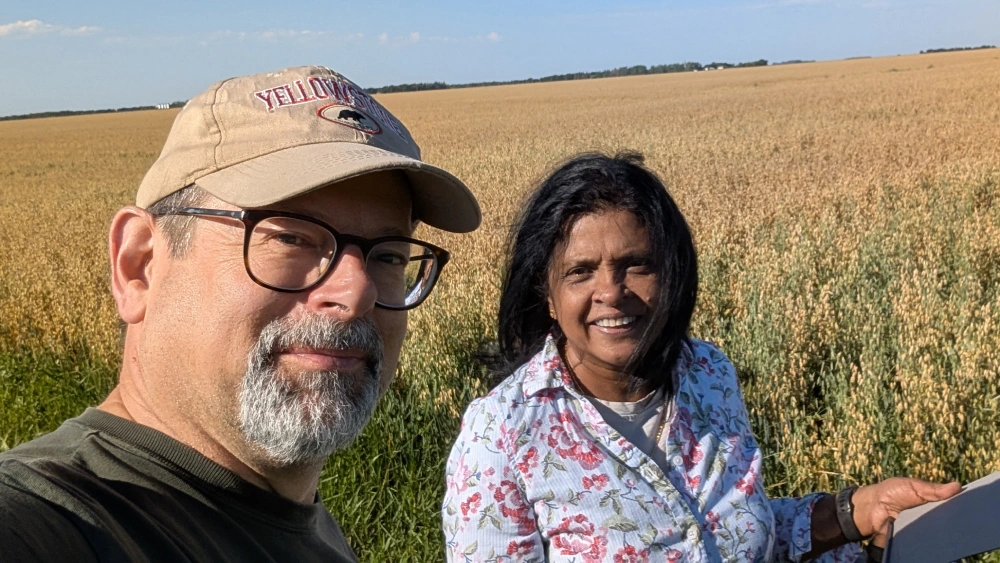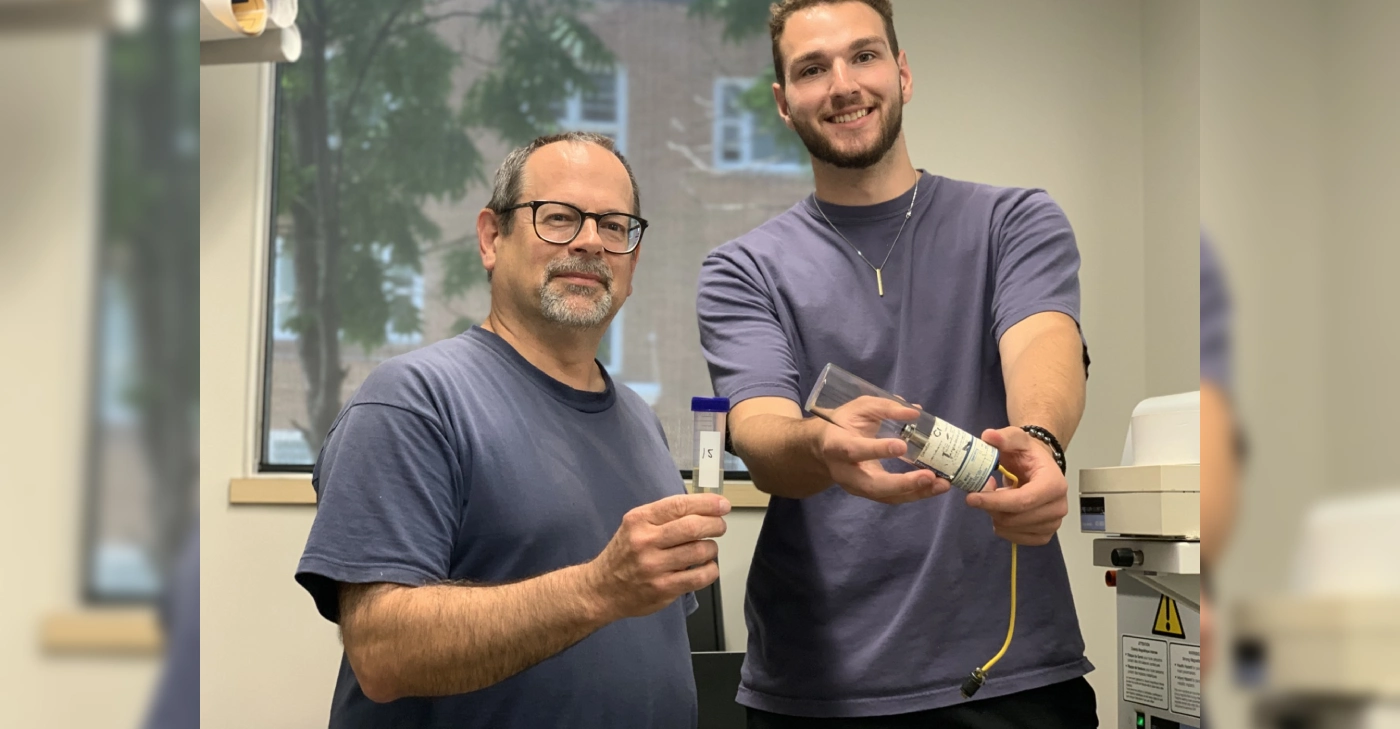UWinnipeg's Dr. Doug Goltz – Analytical Chemistry for Environment and Culture
Dr. Douglas Goltz received his Ph.D. in Chemistry from Carleton University in 1995 through his research on the vaporization mechanisms of metals and inductively coupled plasmas. Upon graduating, he did his Postdoctoral fellowship at McGill University and later became a faculty member in the University of Winnipeg's Department of Chemistry. In the last 20 years, Dr. Goltz's area of research has focused on a variety of research projects in the area of analytical chemistry for which he has been granted significant research funding and has published over 90 manuscripts.
His most recent project involves quantifying very low concentrations (micrograms or less) of metals found in snow samples collected from snow clearing of roads in Winnipeg. Quantifying metals such as lead, nickel and copper require the use of atomic spectroscopy with tools such as inductively coupled plasma-optical emission spectroscopy and graphite furnace atomic absorption spectrometry (GFAAS). Determining the level of contamination of these metals can provide an opportunity to understand the level of pollution of metals from automobiles. Dr. Goltz explains that “A lot of the published literature shows levels of pollution in snow but they are linking the pollution to areas around a smelter, mine site or electricity generating station. Winnipeg is a city without these types of heavy industries, but has a lot of vehicle traffic, which allows a unique opportunity to assess levels of pollution from primarily automobiles without the interference of heavy industry.”
Previously, Dr. Goltz has used vibrational spectroscopy techniques including visible and near-Infrared (Vis/NIR) hyperspectral imaging (HSI) for examining historical objects. When used in combination with X-ray spectroscopy and atomic spectroscopy and Raman spectroscopy hyperspectral imaging has helped museum and painting conservators identify the historical pigments used by artists as well as understand how pigments change in appearance over time. Hyperspectral imaging has also been used successfully to map pigments as well as enhance the appearance of very faint text in historical documents.

Jaxon Rose, a fourth-year chemistry student at the University of Winnipeg, spent the summer of 2025 working with Dr. Goltz on two different research projects.
When he was asked what he liked about the work he is doing, he stated: “I enjoy it, it's interesting, it's something new, and it gives me an insight into what research could be like if I choose to pursue it.” He then continues and says “One of the biggest things I like about it is that you have a little bit more freedom when you're working and more room for thinking and creative thought.”
Dr. Goltz also has a close collaboration with Dr. Darshani Kumaragamage and Dr. Srimathie Indraratne from the Department of Environmental Studies and Sciences who are well known soil scientists. Soil Science intersects many science fields including environmental science and analytical chemistry. Their collaborative research explores many challenging projects including the treatment of contaminated soils as well as finding approaches to keep phosphate used in the farmer's field rather than washing away into lakes. While beneficial to plants, phosphate also contributes to eutrophication. Adding amendments to the soil such as gypsum or iron chloride can tie some of the bioavailable phosphate which may be a good strategy for preventing eutrophication. Students working in soil science often work in the field to collect samples as well as in the laboratory, learning many approaches for measuring soil properties such as pH, Eh, colourimetry and of course spectroscopy!

In addition to his research projects, Dr. Goltz is a celebrated educator and teaches many courses at the University of Winnipeg including intro classes, analytical chemistry, inorganic chemistry, instrumental analysis as well as research projects and directed studies in chemistry.
– profile by UWinnipeg student Aline Garaysa

